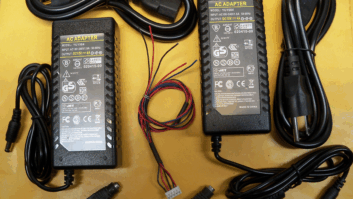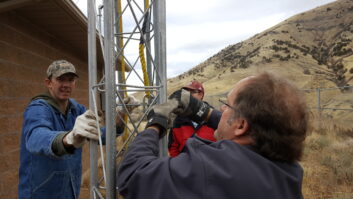Tips on bench power, old laptops, and module rapair
Sep 1, 2007 12:00 PM, By John Landry, CSRE

Bench power and more
Many problems with logic, data and even audio don’t have an off-the-shelf solution, which means that some device must be built from scratch as a solution. Many of these devices, whether a simple OR gate made from diodes or a more complex audio IFB interface, will require a voltage source to test or develop. The bench power supply is ideal for this purpose.
Preferably, a bench supply should have a variable voltage output (from 2V to 25V) and deliver at least 1A if not 2A. There should be metering for voltage and current, and the output should float (neither side should be tied to ground). Many commercial supplies are available from test equipment dealers. They can cost several hundred dollars new, but look for them at hamfests and flea markets for a bargain. If you do any audio circuit work you should find a bench supply with a bipolar output (plus and minus voltages).
I would be lost without my bench supply (an HP 6227B). It has been most helpful in finding short-circuited components in audio amplifiers and console modules.
If you’re lucky enough to have an engineering intern or someone interested in radio engineering, have him build one for you as a project.
Old laptop? Think EAS
A recent post on a radio technical e-mail list reminded me that sometimes an old and outdated piece of equipment is not necessarily a useless one. The thread was discussing the Hollyanne HU-961 EAS decoder unit, which is one of the only units that provides a straight RS-232 serial output of the EAS alert text. This was designed to feed a dot matrix printer of the user’s choosing.
Randy Henry from WPIO-FM posted a link to a simple freeware program that will run on any functioning old laptop at noncomradio.net/dl/c/wscap.exe.
Using the laptop’s RS-232 port, this software will capture any EAS alerts from the HU-961 and add a date/time stamp from the laptop (which can be quickly understood as opposed to the HU’s Julian Date). The software will count up to nine events each week before resetting. The log can then be printed or stored as a file.
I have seen others use basic terminal software to also capture the RS-232 stream, although it’s getting harder to find terminal programs any more.

Fix the module (from a console you don’t have)
I was recently given several broken modules from a console at our Washington, DC, studio. Because they are used in a custom-built console, I don’t have any documentation or even a chassis to test them in.
Armed with my bench supply, I identified basic elements of the board, including the power supply connections. I planned to tack solder leads to the module to access the various connections when I remembered that I had a stash of no-longer-used extender boards. I found one with the same edge connector, so I then tacked leads to the extender board instead. Within an hour I had the voltages and audio connections all doped out, and cables attached for the initial turn-on. The meters on my HP 6227B jumped and settled at 20mA. The module was on and working.
I followed the audio flow with a scope and found the trouble: a dried electrolytic capacitor. The next four modules were plugged into the makeshift test jig and repaired the same problem much quicker than if I had to tack leads on every board.
The Washington guys were happy. So was the boss. A well-known repair firm quoted $200 per module just to look at them.
Landry is an audio maintenance engineer at CBS Radio/Westwood One, New York.
Do you have a tech tip?
Send it to us at[email protected].







